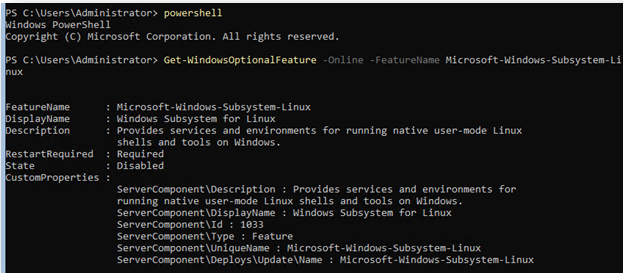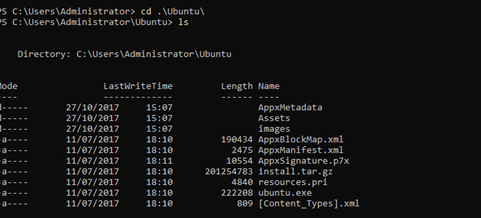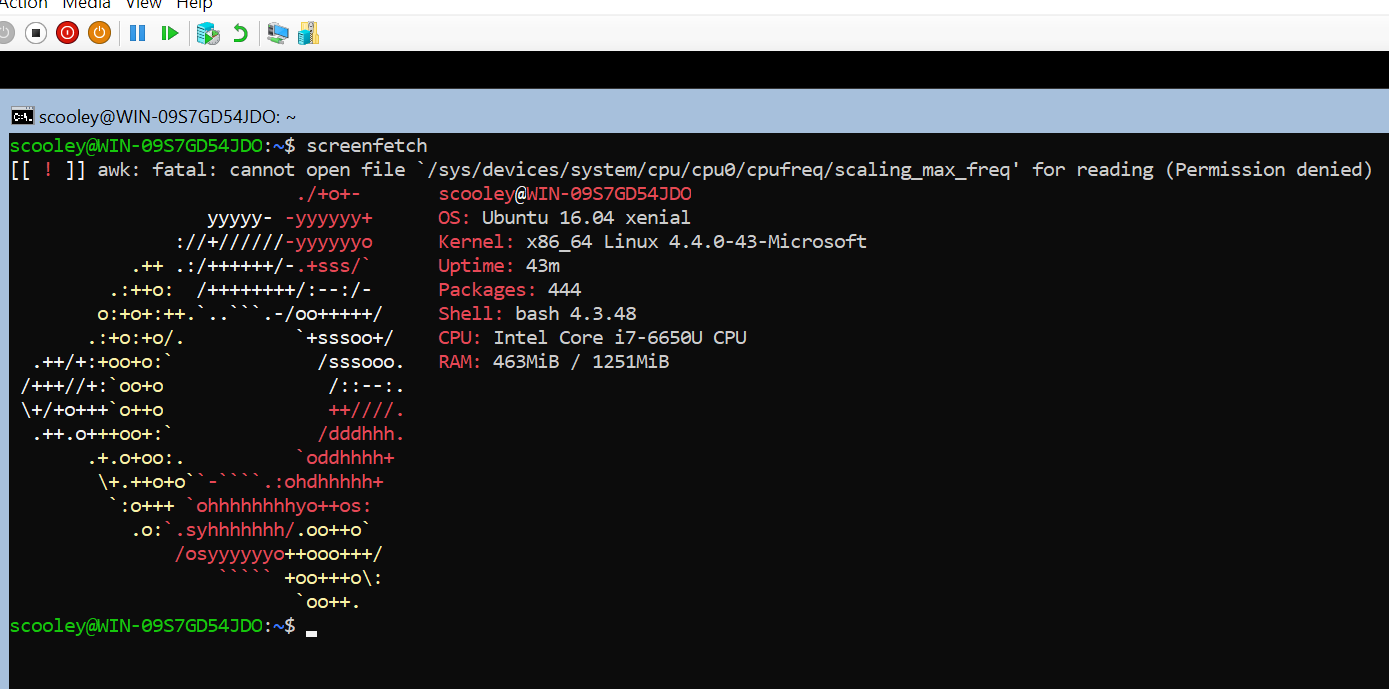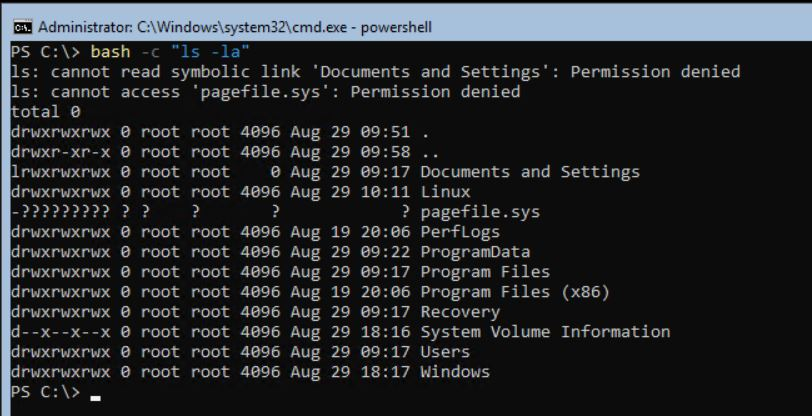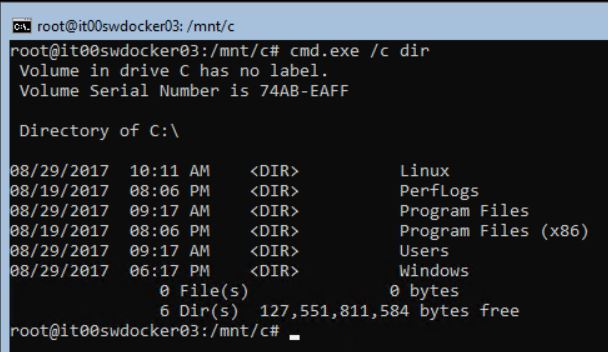- Windows Subsystem for Linux on Windows Server
- Why include WSL on Windows Server?
- What this isn’t — WSL is not a Linux server
- How do I get started using WSL on Server?
- Windows Server Installation Guide
- Install WSL on Windows Server 2022
- Install WSL on previous versions of Windows Server
- Enable the Windows Subsystem for Linux
- Download a Linux distribution
- Extract and install a Linux distribution
- Руководство по установке Windows Server
- Установка WSL в Windows Server 2022
- Установка WSL в предыдущих версиях Windows Server
- Включение подсистемы Windows для Linux
- Скачивание дистрибутива Linux
- Извлечение и установка дистрибутива Linux
- Как включить подсистему Linux в Windows Server 2016
Windows Subsystem for Linux on Windows Server
The Windows Subsystem for Linux (WSL) is available in Windows Insider builds of Windows Server. Now developers and application administrators can run tools they use in Linux environments alongside Cmd and PowerShell.
If you want to jump straight in, the installation guide is available here.
Why include WSL on Windows Server?
We want Windows, including Windows Server, to be a great place for developers. We know developers, system administrators, people managing services and people building services all occasionally need tools available on Linux. Many more would like to run Linux tools as part of their workflow as a matter of convenience.
Previously, there were a few options:
- Run something like Cygwin and rely on Win32 ports of common GNU tools.
Cygwin is a great toolset but it runs into issues when using tools that haven’t been ported to Windows. Many tools simply aren’t available. This is especially common when trying to build and run Ruby & Java solutions, which utilize some Linux-only Gems, libraries and components.
The tools available through Cygwin and other Win32 ports are also notorious for being out of date – which is understandable since updating them requires recompiling them for Windows. For Windows users, however, this is both inconvenient and often leads to troublesome compatibility issues when running, building or deploying software. - Use Linux in a virtual machine.
Virtual machines are designed for production workloads on Windows Server. They aren’t ideal for things closely tied to the Windows Server host. If you need basic Linux command-line tools integrated with their Windows system, a virtual machine will be cumbersome.
This is where running Linux on WSL provides value: WSL runs unmodified Linux (ELF64) binaries natively. It can install and run almost any Linux command-line tool integrated in Windows.
With the additions of WSL and Linux containers with Hyper-V isolation, Windows Server offers a wide variety of Linux options that make it a great place and platform for modern developers.
If you’re a server engineer that needs to run node.js, Ruby, Python, Perl, Bash scripts or other tools that expect Linux behaviors, environment or filesystem-layout, the ability to install and run Linux with WSL expands the tools at your disposal on Windows Server.
What this isn’t — WSL is not a Linux server
Just as with WSL on Windows Client, you can run daemons and jobs like MySQL, PostgreSQL, sshd, etc., via an interactive shell, but you cannot currently use WSL to run persistent Linux services, daemons, jobs, etc. as background tasks.
For these sorts or tools, read more about Linux containers with Hyper-V isolation from the Build 2017 announcement.
How do I get started using WSL on Server?
Windows Subsystem for Linux arrived in Windows Server Insider Build 16237. Follow our new Windows Server WSL Installation Instructions to get started running Linux alongside Cmd and PowerShell on your Servers.
Feel free to comment below or reach out to Sarah and Rich via Twitter.
Windows Server Installation Guide
The Windows Subsystem for Linux (WSL) is available for installation on Windows Server 2019 (version 1709) and later. This guide will walk through the steps of enabling WSL on your machine.
Install WSL on Windows Server 2022
Windows Server 2022 now supports a simple WSL installation using the command:
You can now install everything you need to run WSL on Windows Server 2022 by entering this command in an administrator PowerShell or Windows Command Prompt and then restarting your machine.
This command will enable the required optional components, download the latest Linux kernel, set WSL 2 as your default, and install a Linux distribution for you (Ubuntu by default).
See the standard WSL docs for more information on how to:
Install WSL on previous versions of Windows Server
To install WSL on Windows Server 2019 (version 1709+), you can follow the manual install steps below.
Enable the Windows Subsystem for Linux
Before you can run Linux distributions on Windows, you must enable the «Windows Subsystem for Linux» optional feature and reboot.
Open PowerShell as Administrator and run:
Enable-WindowsOptionalFeature -Online -FeatureName Microsoft-Windows-Subsystem-Linux Download a Linux distribution
See the Downloading distributions section of the manual installation page for instructions and links to download your preferred Linux distribution.
Extract and install a Linux distribution
Now that you’ve downloaded a Linux distribution, in order to extract its contents and manually install, follow these steps:
- Extract the .appx package’s contents, using PowerShell:
Rename-Item .\Ubuntu.appx .\Ubuntu.zip Expand-Archive .\Ubuntu.zip .\Ubuntu Add-AppxPackage .\app_name.appx Installation failed with error 0x8007007e: If you receive this error, then your system doesn’t support WSL. Ensure that you’re running Windows build 16215 or later. Check your build. Also check to confirm that WSL is enabled and your computer was restarted after the feature was enabled.
3.Add your Linux distribution path to the Windows environment PATH ( C:\Users\Administrator\Ubuntu in this example), using PowerShell:
$userenv = [System.Environment]::GetEnvironmentVariable("Path", "User") [System.Environment]::SetEnvironmentVariable("PATH", $userenv + ";C:\Users\Administrator\Ubuntu", "User") You can now launch your distribution from any path by typing .exe . For example: ubuntu.exe .
Руководство по установке Windows Server
Подсистема Windows для Linux (WSL) доступна для установки на Windows Server 2019 (версия 1709) и более поздних версий. В этом руководстве рассматриваются действия по включению WSL на компьютере.
Установка WSL в Windows Server 2022
Теперь Windows Server 2022 поддерживает простую установку WSL с помощью команды:
Теперь вы можете установить все необходимые компоненты для запуска WSL в Windows Server 2022. Для этого введите эту команду в PowerShell от имени администратора или в командной строке Windows и перезапустите компьютер.
Эта команда позволяет включить необходимые дополнительные компоненты, скачать последнюю версию ядра Linux, установить WSL 2 в качестве компонента по умолчанию и установить дистрибутив Linux (по умолчанию Ubuntu).
Из стандартной документации по WSL вы узнаете, как выполнять следующие задачи:
Установка WSL в предыдущих версиях Windows Server
Чтобы установить WSL в Windows Server 2019 (версия 1709+), выполните действия, описанные ниже.
Включение подсистемы Windows для Linux
Перед запуском дистрибутивов Linux в Windows необходимо включить дополнительный компонент «Подсистема Windows для Linux» и перезагрузить компьютер.
Запустите PowerShell от имени администратора и выполните следующую команду:
Enable-WindowsOptionalFeature -Online -FeatureName Microsoft-Windows-Subsystem-Linux Скачивание дистрибутива Linux
Инструкции и ссылки для скачивания нужного дистрибутива Linux см. в разделе Скачивание дистрибутивов в статье по выполнению установки вручную.
Извлечение и установка дистрибутива Linux
После загрузки дистрибутива Linux для извлечения его содержимого и установки вручную выполните следующие действия.
- Извлеките содержимое пакета .appx , с помощью PowerShell:
Rename-Item .\Ubuntu.appx .\Ubuntu.zip Expand-Archive .\Ubuntu.zip .\Ubuntu Add-AppxPackage .\app_name.appx Сбой установки с ошибкой 0x8007007e. При возникновении этой ошибки система не поддерживает WSL. Убедитесь, что вы используете сборку Windows 16215 или более позднюю версию. Проверьте используемую сборку. Также убедитесь, что WSL включен и ваш компьютер перезагружен после включения этой функции.
3. Добавьте путь к дистрибутиву Linux в переменную PATH в Windows (в этом примере C:\Users\Administrator\Ubuntu ) с помощью PowerShell:
$userenv = [System.Environment]::GetEnvironmentVariable("Path", "User") [System.Environment]::SetEnvironmentVariable("PATH", $userenv + ";C:\Users\Administrator\Ubuntu", "User") Теперь вы можете запустить дистрибутив из любого пути, введя .exe . Например: ubuntu.exe .
Как включить подсистему Linux в Windows Server 2016
27.12.2017
itpro
Linux, Windows Server 2016
Комментариев пока нет
Одним из новшеств Windows Server 2016 версии RedStone 3 (1709) является встроенная поддержка запуска нативных бинарных файлов Linux ELF64. Данный функционал реализуется за счет отдельного компонента Windows Subsystem for Linux (WSL), который обеспечивает нужный слой совместимости. В этой обзорной статье мы покажем, как включить подсистему Windows для Linux в Windows Server 2016 и использовать ее для запуска Linux приложений.
Возможность запуска Linux приложений в Windows ранее была представлена в Windows 10. Эта функция носила название Bash on Windows. Начиная с Windows 10 Fall Creators Update это название более не используется и официально эта подсистема теперь называется WSL — Windows Subsystem for Linux. Кроме того, для ее использования более не нужно переключать ОС в режим разработчика (Developer Mode). WSL доступна как Windows Server, так и в виртуальных машинах Microsoft Azure
Предполагаем, что вы уже скачали и установили релиз Windows Server >= 1709. Это может быть сервер с полноценным GUI или в Core режиме.
Проверить текущую версию ОС можно так:
systeminfo | Select-String «^OS Name»,»^OS Version»
Чтобы проверить, что в вашей версии Windows Server имеется функционал WSL, выполните следующую команду:
Get-WindowsOptionalFeature -Online -FeatureName Microsoft-Windows-Subsystem-Linux
Чтобы включить поддержку подсистемы Linuх, выполните команду:
Enable-WindowsOptionalFeature -Online -FeatureName Microsoft-Windows-Subsystem-Linux
После чего сервер нужно перезагрузить.
Далее необходимо скачть архив с адаптированным дистрибутивом Linux. На данный момент Microsoft предлагает поддержку следующих дистрибутивов:
В ближайшем будущем планируется добавить дистрибутивы CentOS и Fedora.
К примеру, с помощью PowerShell по HTTP протоколу, скачаем архив с дистрибутивом Ubuntu:
Invoke-WebRequest -Uri https://aka.ms/wsl-ubuntu-1604 -OutFile ~/Ubuntu.zip -UseBasicParsing
Размер архива около 200 Мб. Распакуем его:
Expand-Archive ~/Ubuntu.zip ~/Ubuntu
Исходный архив можно удалить:
Для запуска установки дистрибутива достаточно запустить файл:
Запустится мастер установки, который в том числе попросит указать имя пользователя и пароль, который вы будете использовать для доступа к середе Linux (эта учетная запись не связана с Windows и входит в группу sudoers, таким образом ей разрешено использовать команду sudo для установки пакетов)
Запустим обновление дистрибутива:
sudo apt-get update
sudo apt-get upgrade
Чтобы выйти из командой оболочки Linux и вернуться в PowerShell, наберите:
Открыть shell в любой момент можно командой:
Имеется возможность запускать команды Linux из консоли Windows и наоборот. К примеру, в консоли PowerShell можно вывести список файлов в каталоге командой ls. Формат команды должен быть такой:
Чтобы из Linux вызвать команду Windows, формат должен быть такой:
Примечание. Обратите внимание, что при запуске исполняемых файлов Windows нужно обязательно указывать расширение и соблюдать регистр имени оригинального файла.
Нужно отметить, что из Linux можно запускать только те исполняемые файлы Windows, которые описаны в специальной переменной окружения. Чтобы добавить в переменную окружения новый путь, выполните команду:
Теперь можно вызвать любой файл из каталога %WinDir%\system32.
Чтобы передать параметр на вход исполняемого файла, нужно воспользоваться такими конструкциями:
$notepad.exe “C:\temp\test.txt”
$notepad.exe C:\\temp\\test.txt
Все исполняемые файлы в этом случае запускаются в контексте учетной записи, запустившей bash.exe.
Итак, подсистему WSL можно использовать для тестирования, разработки и запуска утилит Linux, недоступных в Windows окружении без необходимости развертывать и настривать отдельную виртуальную машины с Linux.





